Tucked away on a quiet side street in London’s affluent and leafy Maida Vale district lies an elegant but unassuming white building.
You could mistake it for the headquarters of a law firm or charity, were it not for the surrounding wall of the property, every inch of which is plastered in graffiti, mostly about The Beatles. For this is no solicitor’s office: this is Abbey Road Studios, and it’s probably the most famous music recording studio in the world.
Though it’s most readily associated with the Fab Four’s album of the same name, a list of other famous records – from Cliff Richard’s Move It to Lady Gaga’s Born This Way, Pink Floyd’s Dark Side Of The Moon and Radiohead’s OK Computer – that were recorded, mixed or mastered at Abbey Road could fill this entire feature. And that’s not even counting the film scores for the likes of Return Of The Jedi and the Lord Of The Rings trilogy that were birthed here.
It remains many A-listers’ studio of choice to this day, and for a music lover, the sense of history as you walk its corridors is palpable.
The list of the studio’s landmark achievements is equally impressive. When it opened in 1931, it was the first purpose-built recording studio in the world. It’s where the first-ever stereo record was made, by legendary sound engineer Alan Blumlein in 1935, and it’s also where the first-ever digital recording was made in 1979.
Read more about music:
- Why do we get so nostalgic about music?
- Why does listening to music do nothing for me?
- Why do people have such different taste in music?
- Can you train your brain to enjoy different music?
It’s an institution, in other words. But now the music world has changed: more artists are recording from their bedrooms than ever before and the face of music is changing all the time. So how does a place like Abbey Road keep up?
My visit begins with a guided tour, which has been arranged for 9am.
As Abbey Road’s head of audio products Mirek Stiles leads the way into the famous Studio 1, I’m struck by two things. Firstly, how big it is – built to make classical recordings, it’s large enough to accommodate both a 100-piece orchestra and a 100-voice choir simultaneously.
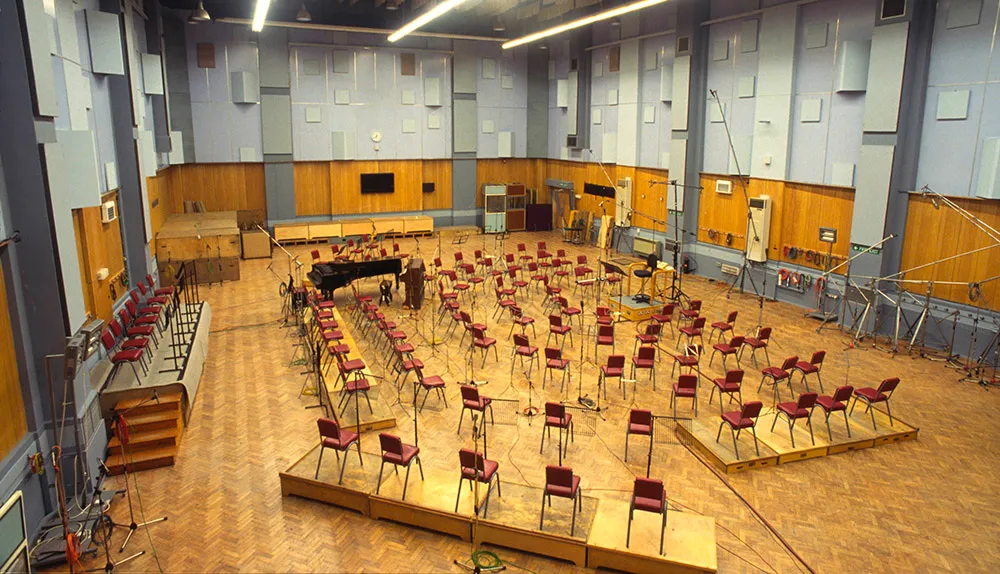
And secondly, how oddly familiar it all seems. I’ve clearly spent too many Friday nights watching music documentaries on BBC Four. I even get to play a few notes on the famous Mrs Mills piano (as used by The Beatles), which sits in the corner.
Studios 2 and 3 aren’t quite as large, but they’re every bit as atmospheric. “This is where Dark Side Of The Moon was made,” Mirek tells me casually in the Studio 2 control room.
Even in the corridors (where photography is strictly forbidden, due to the high possibility of catching a major star on camera), the studio’s legacy is impossible to ignore: the walls are lined with photographs of musical icons past and present, and every available inch of space is crammed with vintage hardware.
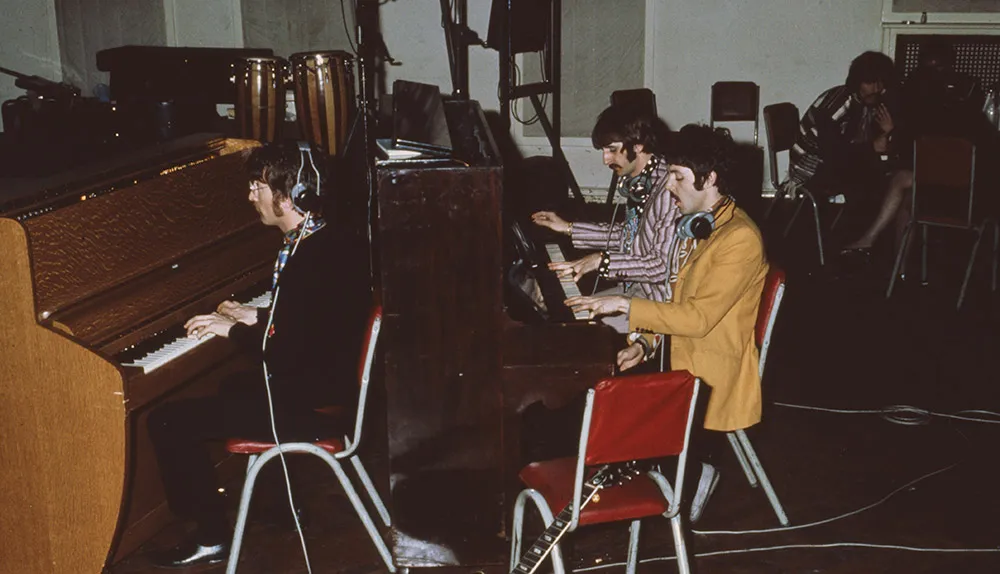
“It’s not a museum, it’s just a storage issue!” laughs Mirek. Still, all those clunky dials and meters are enough to set any gear-head’s heart racing…
Innovation
After the tour, it’s time to find out how Abbey Road is maintaining its position through a process of constant innovation. That innovation takes three main forms: expanding the studio’s own technological ‘offer’; making its prowess available to an ever-widening demographic via dispersion line products; and partnering with music tech start-ups.
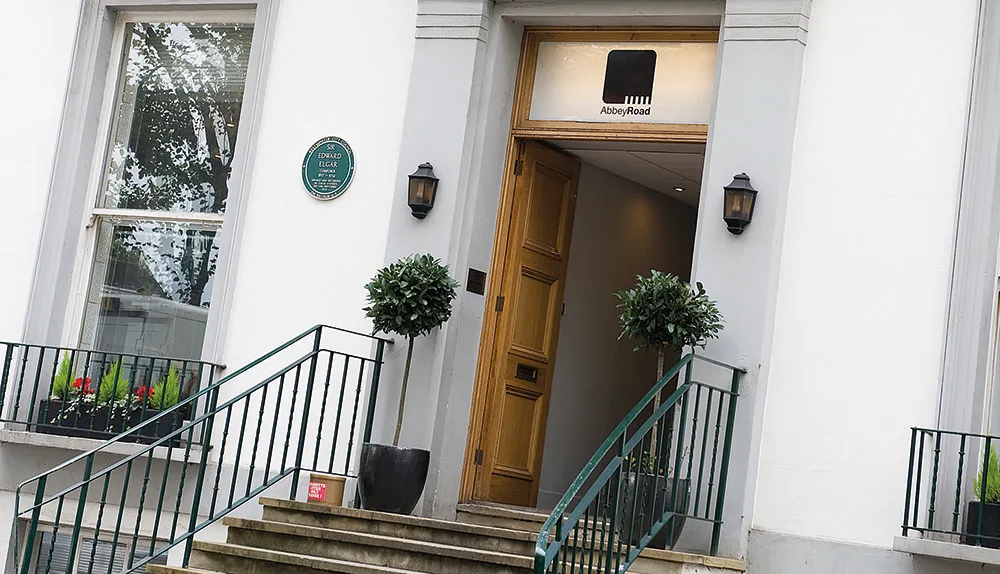
In terms of Abbey Road’s own facilities, the studio has recently undergone the biggest expansion in its history, adding two new recording suites – the Gatehouse and the Front Room.
Modern producers, working largely in the digital sphere, often don’t need the enormous live rooms that Studios 1, 2 and 3 have to offer, so the new spaces offer a more compact, affordable option.
As Stiles puts it: “It’s just more realistic in terms of the recording budgets up-and-coming artists are given these days. We’ve got brand new Neve and Solid State Logic (SSL) desks in there, and the latest version of Pro Tools, but people have access to our vast archive of vintage gear as well, so it’s a mix of the old and the new.”
Another new addition is the Abbey Road Mix Stage, a purpose-built Dolby Atmos post-production suite complete with a huge 4K screen, for mixing film scores.
“It makes us the only studio in the UK that’s capable of not only scoring a film, but also dubbing the soundtrack,” says Stiles. “There are lots of places in the States you can do that, but nowhere else in the UK. So we’re really excited.”
The best of Abbey Road: a timeline
1931 – Abbey Road Studios opens as the first purpose-built recording facility anywhere in the world.
1932 – Composer Sergei Prokofiev makes his first record at the studios.
1944 – Big band leader Glenn Miller’s last-ever recording session takes place at Abbey Road Studios.
1952 – Cowpuncher’s Cantata is the first single recorded at Abbey Road to feature on the brand new Official UK Singles Chart.
1953 – Queen Elizabeth II’s coronation is recorded at Abbey Road via a private landline.
1955 – The first stereo record is released, two decades after Alan Blumlein was granted a patent for the technology.
1966 – Abbey Road engineer Ken Townsend invents the process of artificial doubletracking at John Lennon’s request.
1967 – The world’s first live global satellite broadcast features The Beatles playing All You Need Is Love at Abbey Road.
1969 – The Beatles’ iconic Abbey Road album is released.
1972 – Quadrophonic recording equipment is installed, though the format is to prove a commercial failure.
1973 – Pink Floyd record Dark Side Of The Moon in Studio 2, using the new TG12345 MK IV 16-track mixing desk. The desk recently sold at auction for £1.45m.
1979 – First digital recording, of André Previn and the London Symphony Orchestra.
1981 – Raiders Of The Lost Ark is the first film score to be recorded at Abbey Road.
1994 – English rock band Radiohead record their second album The Bends in Studio 3.
2005 – Abbey Road launches its first software plug-in, an emulation of the TG12345 limiter.
2009 – Abbey Road’s online mixing and mastering service is launched.
2010 – Colin Firth’s speech for the film The King’s Speech is re-recorded at Abbey Road using the actual microphone used by King George VI.
Reaching out
Modern technology has enabled many more artists to record and produce their own music, rather than relying on a record company to fund months of expensive studio time.
To appeal to this demographic, Abbey Road has spent the past five years or so working with respected hardware and software companies to develop realistic emulations of its previously exclusive technologies, so any bedroom music producers can use the studio’s exclusive, high-end tech.
Among the most popular products in Abbey Road’s range are the series of virtual drum instruments.
Each of these – Abbey Road 50s Drummer, 60s Drummer, 70s Drummer, 80s Drummer, Vintage Drummer and Modern Drummer – faithfully recreate the kind of drum sound you’d have got if you recorded at the studios during the period in question.

To do this, a drum kit from the period is played at Abbey Road, with every possible ‘articulation’ (light, medium and heavy snare hits, cymbal crashes, etc) recorded using an entirely contemporaneous signal chain – so a 1950s drum kit will be recorded using a 1950s microphone, running via a 1950s mic preamp into a 1950s mixing desk, put through a 1950s compressor/limiter and recorded on a 1950s tape machine.
With over 40,000 individually recorded sounds in each package, the attention to detail here is staggering.
A similar process was used to create CFX Concert Grand, a software recreation of the legendary Yamaha concert grand piano found in Studio 1. A snip at £175, compared to nearly £120,000 for the real thing!
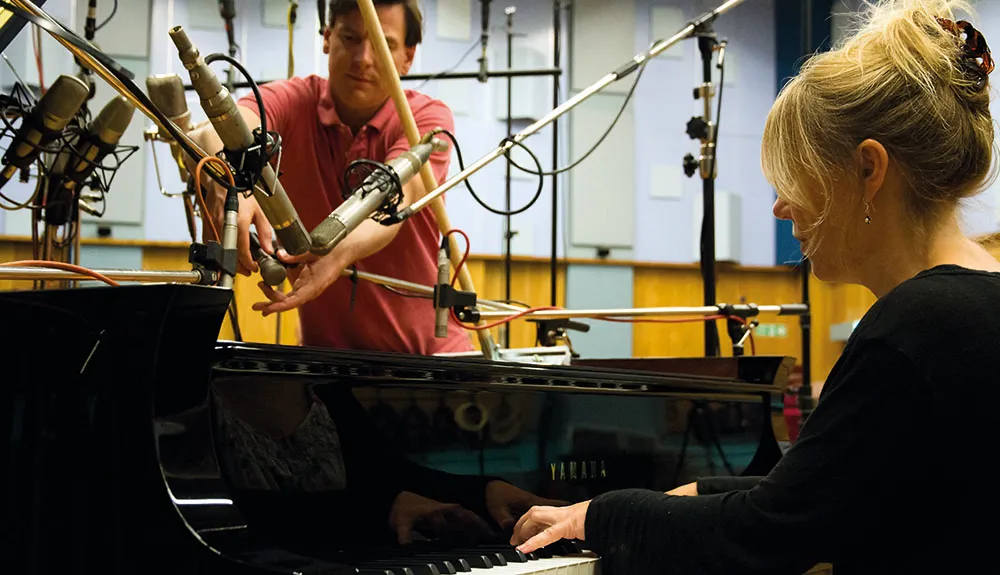
Two of the most recent additions to the line-up are the Abbey Road Vinyl Plug-in, which faithfully models the studios’ vinyl cutting and playback gear, and will add ‘vinyl warmth’ to digital productions, and the REDD Microphone – the first microphone in the world to have a preamp built into the mic itself. Both have been well received, says Stiles.
“The vinyl plug-in has been particularly interesting, because we’ve found people are using it to cut individual tracks – drums, vocals or guitars – to vinyl, prior to the final mixdown. That wasn’t really feasible before.”
For the past year Abbey Road has also been running Red, a mentoring programme for start-ups. “Whether it’s help with engineering or advice on marketing, there’s almost certainly someone within EMI/Universal who has the necessary expertise,” says Red programme manager Jon Eades.
“My job is to stay in contact, find out what the companies need, and then find someone at Abbey Road who can help.”
Start-ups involved so far have included:
- Headphones manufacturer Ossic
- Online mastering service Cloudbounce
- Uberchord, a guitar tuition app that can analyse chords you play and tell you where you’re going wrong
- Scored, an app that helps aspiring film-makers soundtrack their own movies
- Qrates, an on-demand vinyl pressing service that’s proved extremely popular with small record labels
- Audiohunt, which began life as a peer-to-peer marketplace for high-end audio equipment but has since transformed itself into a kind of Uber for music processing, whereby a producer says, “I want this track passed through an XYZ limiter,” and the first XYZ owner to respond gets the gig.
“We’re really pleased with how it’s gone so far,” says Eades. “Bear in mind that we’re not just helping them out here – we’re also potential customers or partners, so it’s in our interests to make it work!”
Virtual insanity
Stiles is also involved in Red, and his work with Ossic to develop convincing 3D headphones for VR is an example of how Abbey Road is embracing innovation and drawing on its long legacy.
“Everyone’s excited about virtual reality, and visually, VR is amazing – but unless you’ve got the sound to back that up, you’re only getting half the story. So 3D audio is attracting interest right now, and it all seems to be going back to two quite old technologies: binaural and ambisonics,” Stiles says.
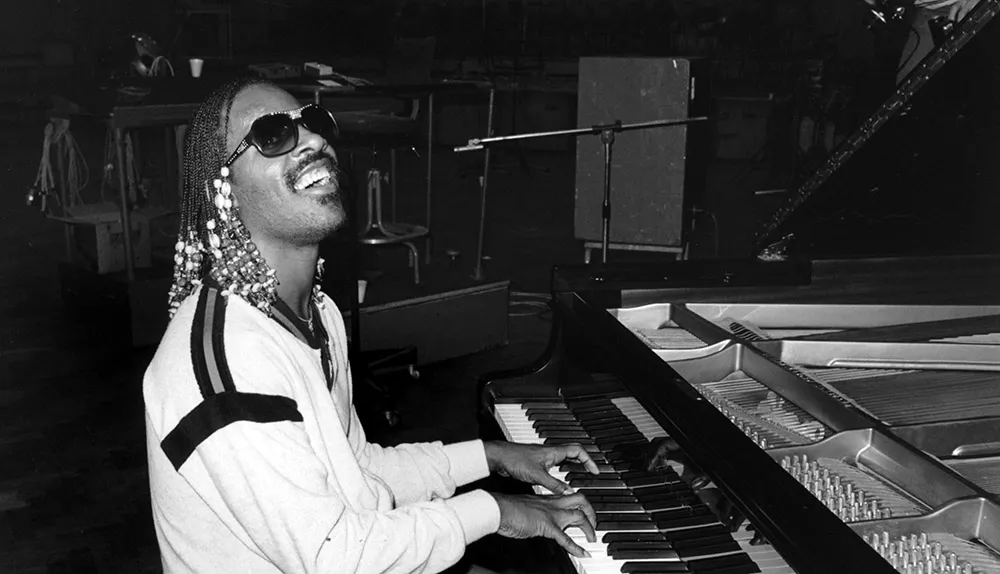
Binaural recording uses filters to mimic the way your ears actually hear, taking into account your nose and ear shape, and how sound gets distorted between the source and your brain.
It was invented in 1935 by Alan Blumlein, but it was never really utilised. Ambisonics was invented in 1975 by Oxford professor Michael Gerzon. It recorded sound in many different directions by using lots of capsules, much as a 360° camera uses multiple lenses today.
“So today, we’ve got this problem of how to create convincing 3D sound in headphones,” continues Stiles, “and it’s coming down to a technology from 1975 and another from 1935!
"So now I’m basically gatecrashing people’s recording sessions with the ambisonic mics, recording things and then playing about with the software in post-production. Getting my feet wet, trying stuff out and making sure that, if this does kick off in a big way, Abbey Road knows what it’s doing with it.”
Read more about music:
- Do other animals play music?
- Human brains are naturally tuned to hear music
- Why does music make us feel good?
- When did humans first make music?
Stiles’ enjoyment of his job is written all over his face, which is probably why he’s been at Abbey Road for over 20 years – although, as he says, such longevity is fairly common at the studios.
“You tend to start working here and you don’t really want to leave,” he smiles. “Just the breadth of different work that comes through keeps it interesting. It’s an amazing place to be!”
- This article first appeared in issue 308 of BBC Focus
